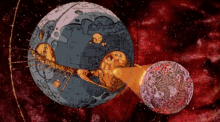Echolocation
Explorer
Great advice as always, Arkwright. Thanks for the write-up.
I'm currently preparing these encounters for my players. Do you have more specific advice on this? Would you recommend fewer fights with more fearsome foes? If so, any suggestions for cool enemy powers?
I've rejigged this clause in my campaign, wherein the rites of rulership demand that the ruler cannot be immortal/have eternal life. This slight change in wording allows ghosts (but not Stanfield) to assume the throne.
- As-written the assasinations involve repeating a lot of fights. Might be best to drop.
I'm currently preparing these encounters for my players. Do you have more specific advice on this? Would you recommend fewer fights with more fearsome foes? If so, any suggestions for cool enemy powers?
This is more of an aside, but the plot that the Ob would make Stanfield king is strange to me. I know it is mentioned in both Book 8 and 9. But, in Bonds of Forced Faith, Stanfield could not be named as king "because the rites demand the monarch must be mortal, and Stanfield perpetually reincarnates" (as cited from King Lorcan Finn's Character Goal). Arguably for the same reasons, a ghostly Catherine Romana could not challenge the king for his throne.
- Why is Stanfield doing his lighthouse plan? Book 9 says it's to place all of Risur under mental domination, but Book 10 makes clear that mental effects are mild and everyone is mostly free-willed. Best to say that Stanfield is doing an extra lighthouse-effect that will dominate Risur. Why? To make the Risuri accept Stanfield as King of Risur, empowered by the Rites of Rulership and able to take down the Fey Titans if they cause trouble.
I've rejigged this clause in my campaign, wherein the rites of rulership demand that the ruler cannot be immortal/have eternal life. This slight change in wording allows ghosts (but not Stanfield) to assume the throne.



